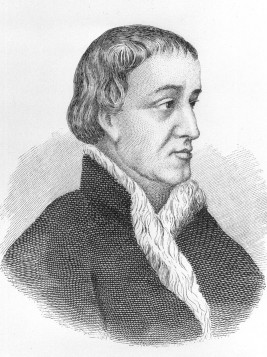People
Maisonneuve, Montréal's first builder
Montréal's co-founder, Paul de Chomedey, sieur de Maisonneuve, was born into the nobility and began his military career at the age of 13.
Born on February 15, 1612 at Neuville-sur-Vanne in Champagne, Maisonneuve quickly forged a reputation as a man of honour. He always distanced himself from the dissipated lifestyles of his comrades in arms and very early manifested great piety, according to his biographers.
When he was about to turn 30, he was chosen by Jérôme Le Royer de La Dauversière and Jesuit priest Charles Lalemant to found Ville-Marie.
In May 1641, Maisonneuve, along with Montréal co-founder Jeanne Mance, leave the Port of La Rochelle for the colony. After spending the winter near Québec City, Maisonneuve takes possession of the island of Montréal in May 1642 in the name of the Société de Notre-Dame.
Here is how the Jesuits reported the event in their chronicles, the Relations: “On May 17 of 1642, the Governor provided Sieur de Maisonneuve with possession of the Isle, in the name of the Messieurs de Mont-real, to begin the first buildings. Father Vimont had the Veni Creator sung and said the Holy Mass, presented the Holy Sacrament and beseeched Heaven for a happy commencement of this work: dependent on the labour of men: creating a log refuge from our enemies.”
A colony to build…and defend
Maisonneuve thus becomes Governor of the island, overseeing the first “Montréalistes,” all the while organizing their defence against the Iroquois incursions that have been occurring since 1643.
Most notably, he builds Fort Ville-Marie near which is located a Catholic cemetery for the first French graves (today in the Pointe-à-Callière ruins in Old Montréal.)
Jeanne Mance and Maisonneuve divide the work: while Maisonneuve is responsible for “outdoors and war,” Jeanne Mance looks to “care indoors.”
Beginning in 1648, Maisonneuve distributes the first concessions to the inhabitants and delineates the city limits in keeping with the seigneurial regime. In 1653, thanks to the support of Jeanne Mance, he returns from France with 120 recruits, soon to be followed by Marguerite Bourgeoys and 100 soldiers, which significantly swell the population of the island.
Nevertheless, the early years are difficult for the Montréal colony and for the small numbers of French living there. Conditions are far from stellar, the climate is hostile, house construction proceeds slowly and co-existence with the First Nations is not always easy.
In 1663, Maisonneuve abandons the Seigneurie of Montréal to the Sulpicians and two years later retires and returns to France to live in Paris. He dies on September 9, 1676 at the age of 64.
Vestiges of the era
Vestiges of the era reside under Pointe-à-Callière: the first Ville-Marie cemetery and now the Fort Ville-Marie – Québecor Pavilion which houses the new exhibition, Where Montréal Began.


